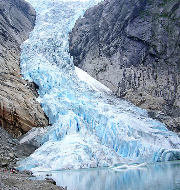Peru Loses Over Half of Glacial Coverage in Six Decades
Peru has experienced a devastating loss of more than half of its glacier surface in the last six decades, with 175 glaciers becoming extinct between 2016 and 2020 due to the impacts of climate change, according to scientists from Peru’s National Institute of Research of Mountain Glaciers and Ecosystems (Inaigem).
Alarming Statistics
In the span of 58 years, 56.22% of the glacial coverage recorded in 1962 has been lost. The primary factor contributing to this drastic impact is the increase in the average global temperature, leading to an accelerated retreat of glaciers, particularly those in tropical areas.
Extinction and Retreat
The alarming data indicates that Peru now has only 44% of the glacial coverage recorded in 1962, representing 1,050 square kilometers (405 square miles) of remaining glacial coverage. Some mountain ranges, like Chila, have experienced nearly complete disappearance, with Chila losing 99% of its glacial surface since 1962. Notably, Chila is a critical region as it is the source of the first waters that contribute to the Amazon River.
Increased Risks and Historical Tragedy
There are heightened risks for communities in lowland areas due to the connection between glacier loss and historical tragedies. The devastating 1970 event is a case in point, when a massive sheet of ice from the snow-capped Huascarán, triggered by a 7.9 magnitude earthquake, caused a mud avalanche that destroyed the city of Yungay and claimed more than 20,000 lives.
Urgent Call for Climate Action
Peru’s experience underscores the urgent need for global climate action to address the root causes of glacial retreat and climate change. The consequences of losing glaciers extend beyond environmental impact, affecting water resources, ecosystems, and the safety of vulnerable communities.
Month: Current Affairs - November, 2023
Category: Environment Current Affairs








